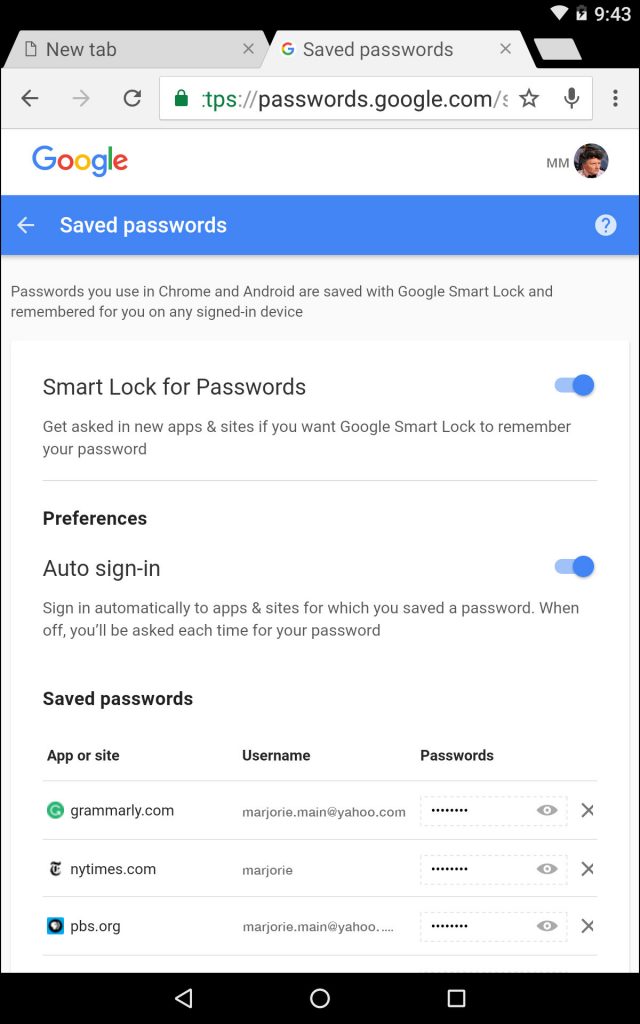Allowing the Chrome browser to save your login and password information for website accounts is safer now than it used to be with the Smart Lock security feature that Google introduced last year for its Chrome software. Like a standard password manager program, Smart Lock saves and syncs passwords across the computers and mobile devices you use with your Google account. You can see the stored list in the Chrome settings or by logging onto your account and visiting passwords.google.com; you may also need to supply your computer’s main user password if you use it to log into the machine.
Google is not the only browser creator to offer a built-in password manager. Mozilla Firefox and Opera have their own version of the feature, as do Microsoft’s Edge and Internet Explorer browsers. Apple includes password-management tools with its Safari browser (as well as with its iCloud Keychain service and the Keychain Access software that comes with the Mac’s operating system).

Some security experts recommend using a stand-alone password manager instead because many programs work across different platforms, provide strong-password generators and use higher levels of encryption for stored data.
Using the browser’s password manager to remember your login information can be convenient and may help avoid the tendency (and weak protection) of using overly simple passwords — or the same password across multiple sites. But while most browser-based password managers have upped their security protections, some risks can remain, especially if your computer or master-account password is breached. For example, the synced password data of some users may have been compromised after Opera’s servers were attacked over the summer.
If you do not want to use a separate app or keep your passwords written down on paper in a secure location, Google’s browser has one of the better-protected integrated password managers. But again, keep in mind that hacks can happen. As extra precautions, set up passwords or PIN codes to get into your computer and mobile devices, make sure you have two-step verification turned on for your Google account and encrypt the synced data stored on Google’s servers with a passphrase.

